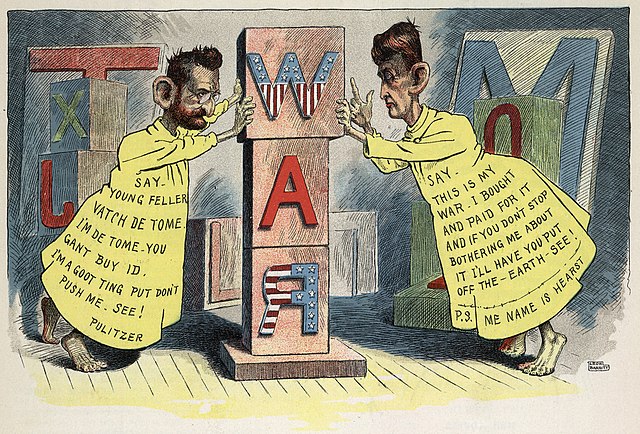Clickbait is a text or a thumbnail link that is designed to attract attention and to entice users to follow ("click") that link and read, view, or listen to the linked piece of online content, being typically deceptive, sensationalized, or otherwise misleading. A "teaser" aims to exploit the "curiosity gap", providing just enough information to make readers of news websites curious, but not enough to satisfy their curiosity without clicking through to the linked content. Clickbait headlines often add an element of dishonesty, using enticements that do not accurately reflect the content being delivered.
The "-bait" suffix makes an analogy with fishing, where a hook is disguised by an enticement (bait), presenting the impression to the fish that it is a desirable thing to swallow.
Fictional examples of "chumbox" style adverts, employing common clickbait tactics of using an information gap to encourage reader curiosity, and promising easy-to-read numbered lists
Artistic representation of "clickbait", Bondi Junction, New South Wales, Australia
In journalism, yellow journalism and the yellow press are American newspapers that use eye-catching headlines and sensationalized exaggerations for increased sales. The English term is chiefly used in the US. In the United Kingdom, a similar term is tabloid journalism. Other languages, e.g. Russian, sometimes have terms derived from the American term. Yellow journalism emerged in the intense battle for readers by two newspapers in New York City in 1890s. It was not common in other cities.
The Yellow Kid, drawn by Richard F. Outcault, appeared first in Pulitzer's New York World and then moved to Hearst's New York Journal.
"Evil spirits", such as "Paid Puffery" and "Suggestiveness", spew from "the modern daily press" in this Puck cartoon of November 21, 1888.
"The Yellow Press", by L. M. Glackens, portrays William Randolph Hearst as a jester distributing sensational stories.
"Yellow journalism" cartoon about the Spanish–American War of 1898. The newspaper publishers Joseph Pulitzer and William Randolph Hearst are both attired as the Yellow Kid comics character of the time, and are competitively claiming ownership of the war.






